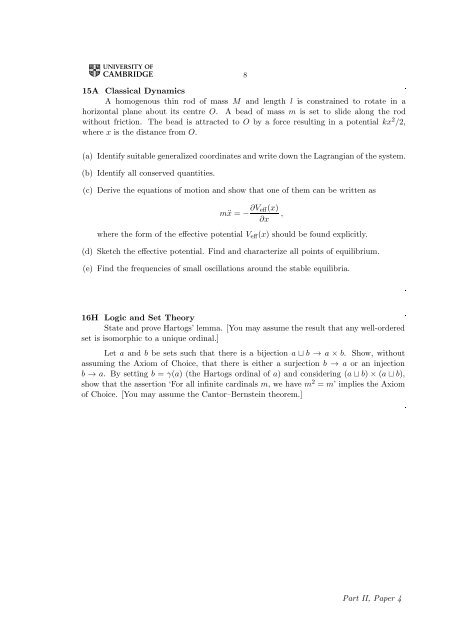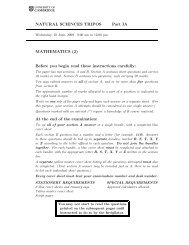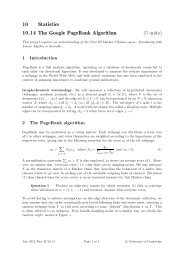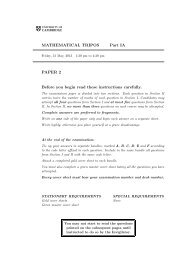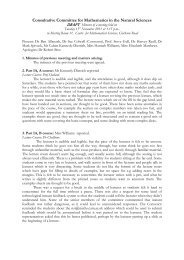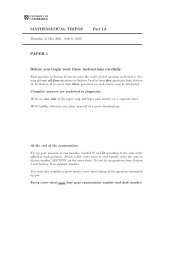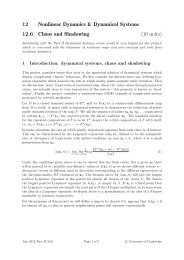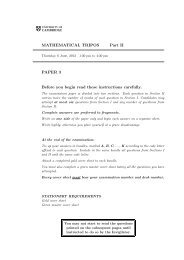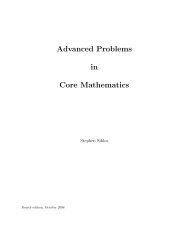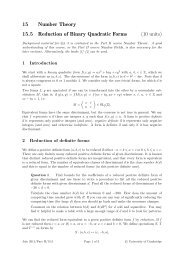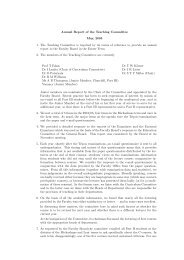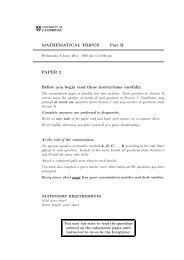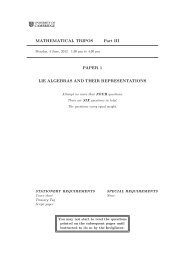MATHEMATICAL TRIPOS Part II PAPER 4 Before you begin read ...
MATHEMATICAL TRIPOS Part II PAPER 4 Before you begin read ...
MATHEMATICAL TRIPOS Part II PAPER 4 Before you begin read ...
- No tags were found...
Create successful ePaper yourself
Turn your PDF publications into a flip-book with our unique Google optimized e-Paper software.
8<br />
15A Classical Dynamics<br />
A homogenous thin rod of mass M and length l is constrained to rotate in a<br />
horizontal plane about its centre O. A bead of mass m is set to slide along the rod<br />
without friction. The bead is attracted to O by a force resulting in a potential kx 2 /2,<br />
where x is the distance from O.<br />
(a) Identify suitable generalized coordinates and write down the Lagrangian of the system.<br />
(b) Identify all conserved quantities.<br />
(c) Derive the equations of motion and show that one of them can be written as<br />
mẍ = − ∂V eff(x)<br />
∂x<br />
where the form of the effective potential V eff (x) should be found explicitly.<br />
(d) Sketch the effective potential. Find and characterize all points of equilibrium.<br />
(e) Find the frequencies of small oscillations around the stable equilibria.<br />
,<br />
16H Logic and Set Theory<br />
State and prove Hartogs’ lemma. [You may assume the result that any well-ordered<br />
set is isomorphic to a unique ordinal.]<br />
Let a and b be sets such that there is a bijection a ⊔ b → a × b. Show, without<br />
assuming the Axiom of Choice, that there is either a surjection b → a or an injection<br />
b → a. By setting b = γ(a) (the Hartogs ordinal of a) and considering (a ⊔ b) × (a ⊔ b),<br />
show that the assertion ‘For all infinite cardinals m, we have m 2 = m’ implies the Axiom<br />
of Choice. [You may assume the Cantor–Bernstein theorem.]<br />
<strong>Part</strong> <strong>II</strong>, Paper 4


